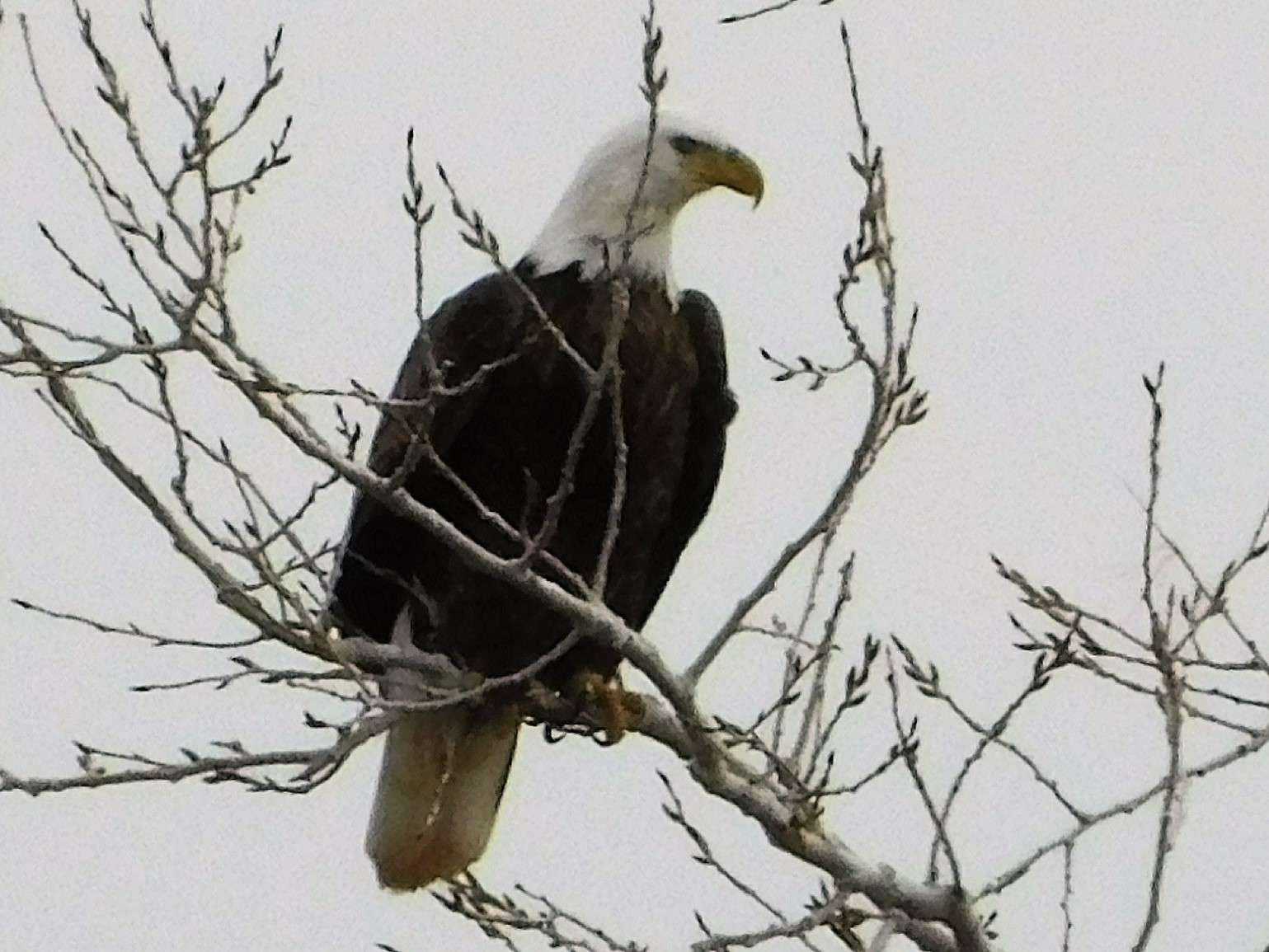
By KAREN MADORIN
While some folks negatively refer to Kansas as Flyover Country, I consider the term as one of our state’s best descriptors.
Because of our location and the presence of features such as Cheyenne Bottoms and Quivira Marsh, the migratory bird Central Flyway crosses right overKansas.
Due to this, we see and hear massive migrations each spring and fall that few experience. As a bonus, geese and ducks that nest in Canada fly this far south in the winter before stopping on our lakes and reservoirs to feed and fuel the rest of their journey. Making it a double bonus, bald eagles that also reproduce in the North Country, follow those honking, quacking flocks to hunt weaker, slower members. Growing populations made this a banner year for fans of our national bird.
Kansas Birding on Facebook shared recently completed Christmas Bird Counts (CBC) that documented at least 100 eagles at Kirwin Reservoir. Nearby Webster Lake CBC reported at least 125 bald eagles following Canada goose, snow goose, and duck flocks this winter. If you want to nature watch, it’s worth a drive to view thousands of geese on the water as well as the hundreds circling and landing in surrounding farm fields. Park safely, crank up the heat, roll down the window, and listen to them gabble and honk.
Once you get close enough to the lake to watch massive rafts of water fowl, grab binoculars, spotting scopes, or telescopic lenses to look for accompanying bald eagles. In the past, seeing more than a couple thrilled a birder’s heart, but this year, lucky viewers might see a score or two sitting on ice, picking at remnants of goose or duck or fish, preening to keep feathers in prime condition, or resting between feasts.

On a recent trip to Webster, we first spied several bald eagles perched high in trees lining the north shore camping and boating areas. With distinctive heads and hooked beaks turned to focus on thousands of waterfowl on the lake, they searched for those weak birds that provide a quick protein boost.
We then stopped on a high vantage point that gave an open view of much of the ice-covered water. Once I zoomed in with my telescopic lens to scan the area, I’d see anywhere from 5 to 10 eagles situated not far from each group of hundreds if not thousands of waterfowl.
Later, we investigated the campground/cove areas, pulling into one where we promptly spotted more eagles watching from trees near water. We found a parking spot that offered a distant view of a semi-protected cove and counted 39 eagles in that spot. Once again, they pecked at scraps, preened, and snoozed while a couple of lazy ones sneaked close enough to raise a fuss over a fellow eagle’s food cache.
While eagles have historically followed migrating waterfowl across Kansas during fall and winter, this year’s bird count suggests that conservation efforts have boosted their recovery. It also makes Flyover Country sound so much more intriguing than the original disparaging remark intended.
Karen is a retired teacher, writer, photographer, outdoors lover, and sixth-generation Kansan. After a time away, she’s glad to be home.






